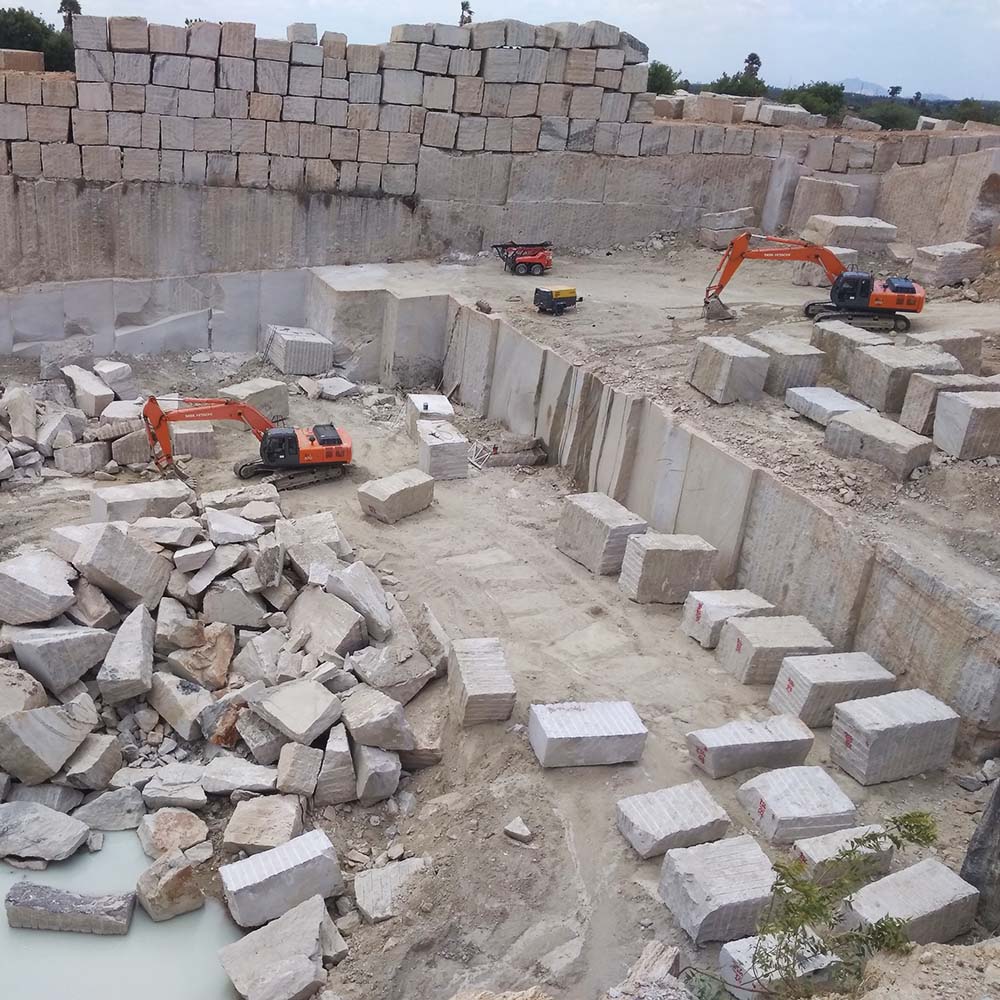Revealing Granite Quarries in South Africa Legacy: A Trip With Quarries
Revealing Granite Quarries in South Africa Legacy: A Trip With Quarries
Blog Article
Unveiling the Mysteries of Granite Quarrying: Where Toughness and Beauty Meet
The globe of granite quarrying is a realm where the raw stamina of nature assembles with human artistry to develop frameworks that stand the examination of time with an air of elegance. From the midsts of quarries to the careful polishing in workshops, the process of changing granite right into architectural marvels is a complex dancing of practice and innovation. As we peer right into the depths of this ancient craft, we start to reveal the hidden details that shape the very significance of our constructed atmosphere.
The Origins of Granite Quarrying
In the annals of building background, the beginnings of granite quarrying are shrouded in a tapestry of old craftsmanship and geological marvels. Dating back to old Egypt and Mesopotamia, the extraction of granite from quarries marked the beginning of a journey that would at some point bring about the creation of some of the world's most iconic structures.
Granite quarrying's roots can be mapped to the experienced artisans who recognized the rock's longevity and visual appeal. Through a combination of primitive devices and large resolution, these early quarry workers uncovered granite blocks that would come to be the building blocks of human beings.
As people advanced, so did the methods of quarrying granite. The Romans, renowned for their design expertise, established innovative techniques for removing granite to construct monuments, holy places, and roadways that stood the examination of time.
The tradition of these ancient quarrying methods remains to shape modern-day architecture, with granite staying a symbol of toughness and sophistication in building and construction tasks around the world. (granite quarries in south africa)
Devices of the Quarrying Profession
The development of granite quarrying techniques from old worlds to contemporary times highlights the vital function played by the devices of the quarrying sell forming the industry's practices. In old times, quarrying tools were rudimentary, frequently being composed of chisels, hammers, and wedges made from products like bronze or iron. These devices required substantial workforce and time to essence granite blocks from quarries.

In addition, the intro of pneumatically-driven tools and high-powered equipment has actually considerably lowered the physical labor called for in quarrying operations, enhancing worker security and efficiency. As the quarrying industry remains to innovate, the tools of the trade remain at the forefront of driving progress and shaping the future of granite removal.
Extracting Blocks of Granite
Making use of precision equipment and progressed techniques, the extraction of granite obstructs from quarries has actually ended up being an advanced process in the modern-day quarrying industry. Regulated blowing up strategies are then utilized to damage apart the granite into manageable sections.

Sprucing Up and Completing Strategies
To accomplish a perfect surface area on granite blocks, knowledgeable craftsmens employ a series of careful polishing and completing strategies. After the first extraction and shaping procedures, the granite blocks go through a comprehensive polishing stage to enhance their natural beauty and resilience. One usual approach used in polishing granite is diamond abrasion, where commercial rubies are made use of to grind and polish the stone to a smooth finish. This procedure not only produces a shiny surface yet likewise ensures uniformity in color and structure across the granite block.
In enhancement to sprucing up, completing strategies are put on further improve the granite's appearance. These methods may consist of flaming, sharpening, or brushing, each offering click for more info one-of-a-kind structures and coatings to fit various visual choices. Flaming, as an example, includes revealing the granite surface area to high temperature levels to produce a rough, distinctive finish, perfect for exterior applications where slip-resistance is crucial. Refining, on the other hand, offers a matte coating that is smooth to the touch, ideal for interior counter tops and flooring. By very carefully selecting and using these brightening and ending up techniques, craftsmens can change raw granite obstructs into charming pieces that showcase both stamina and sophistication.

Environmental Impact and Sustainability
With the growing focus on ecological awareness in the sector, granite quarrying methods are increasingly looked at for their effect on natural resources and lasting sustainability. Furthermore, the transportation of granite from quarries to processing centers creates carbon discharges, additionally adding to environmental destruction.
To mitigate these impacts and make sure sustainability read review in granite quarrying, industry stakeholders are adopting numerous procedures. Carrying out advanced technologies to minimize power consumption and water use, redeeming quarried land for ecological repair, and advertising responsible sourcing methods are some approaches being employed. Certifications such as the Woodland Stewardship Council (FSC) and the Management in Energy and Environmental Style (LEED) assistance consumers identify ecologically pleasant granite items.
Final Thought
In final thought, granite quarrying is a procedure that requires specialized tools and techniques to extract blocks of granite and brighten them to a high degree of coating. While the environmental influence of quarrying can be considerable, efforts are being made to enhance sustainability practices in the industry. Generally, granite quarrying is a delicate balance in between utilizing that site the toughness and elegance of this natural stone while decreasing its effect on the setting.
Report this page